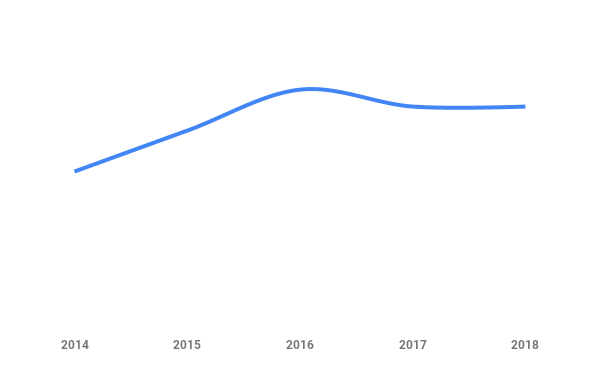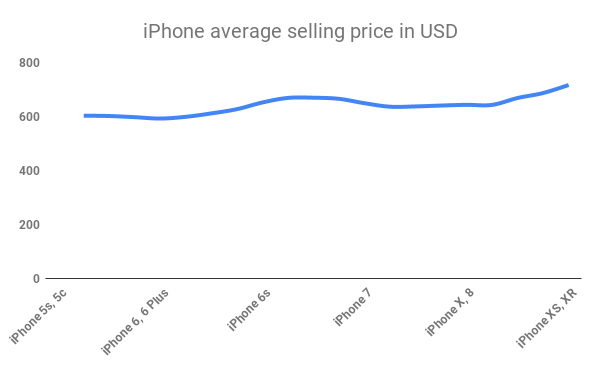How To Turn $500 Phone Into $1000 One
How To Turn $500 Phone Into $1000 One
Imagine for a second that you’re a CEO in charge of a big electronics company, globally present, which soon plans to launch a new smartphone. It’s a thing of beauty, you and your entire team have spent countless overtime hours on it, exchanged a thousand too many late night e-mails, and went through dozens of iterations to get the design just right. Supply chain, and maps services negotiations were hell but that’s also behind you. There’s still one problem puzzling you. You’re not sure how much it should cost. If it’s too cheap and does not sell in massive numbers, you won’t have enough to fund R&D for the next phone. At the same time it can’t be too expensive, since the market is not in vacuum and customers have alternatives.
Your smart team of VPs and advisors comes up with brilliant idea of using a focus group, and asking just the right questions to see how much potential customers are willing to spend. They grossly oversimplify things and have two “customers” represent the entire population, and realize how roughly one half is willing to spend $500, while another would not mind shelling out $1000. Sounds like good news.
So what do you do?
Price it right in between, at $750.
And what happens next?
First potential customer sees the price tag, looks in his wallet, and decides that since he has $500 to spend on a phone, he should look somewhere else. The second customer looks at the same $750 price, looks in his wallet, and happily realizes that he can buy the phone, and keep $250. And that happens a million times.
You sell a grand total of one million units, with $750 million in revenue. But to keep the company running, you needed $1 billion for R&D, wages, pencils, artisan coffee, and other costs. You end the year in red, entering a tailspin from which you never manage to recover.
Unless…
Unless you can somehow sell to everyone — make the first guy pay $500, and the other one give up his $1000 at the same time. Then you could sell two million phones, and have $1.5 billion in revenue. If that happens, instead of a failed company you’ll get a bonus which will buy you a suburban house, a car, send two kids through college, and send you on an exotic beach while the rest of the neighbourhood is shovelling snow.
So how can you, mister CEO, get to your beach, instead of ending up unemployed?
Imagine also that number of phones you sell each year hit a plateau, and is now a bit down from its peak:


To get more in total revenue, you could try to lower the prices of your products. Or you could try to somehow get more for each phone, while still selling the same number of phones per year.
Now here’s a twist: you’re Tim Cook, the CEO of Apple.
Here is the same worrying line, but with significant iPhone releases instead of years:


After years of strong growth and a huge boom when big screen iPhones arrived, sales have been mostly flat. In order to grow income, each product sold had to become more expensive. A slight increase in prices of flagship models over few years is an approach that could work. And that’s what Apple did, easily observable if we look at how much on average iPhones get sold for:

Now we need to stop for a moment, and consider the big picture. iPhone sells a lot of units every year. A really large number that deserves to be put into proper context. Current population of Earth stands at 7.6 billion people. If we consider every breathing human in the world — both 9 months old or 99 years old, from all continents, those with $5 income per day and those belonging in 1%, those with rusty bicycles, and those in Teslas, and those in private jets, 3.2 billion people with Internet access and 4.4 billion who cannot get online yet — all of them, then within only a single calendar quarter full 1% of Earth’s population will buy a brand new iPhone. Every quarter. Just excluding people without Internet access cuts the possible targeted audience in half, and there’s still a lot of cutting to be made until we get to those who can afford to buy a phone for many hundreds of dollars.
But it works.
Each year well over 200 million iPhones are sold. If you try to get a sense for that number by comparing it to others pieces of consumer technology, you’ll get this:


iPhone sells way more than Mac and iPad combined. iPhone sells about six times more units than the entire smart speaker industry did in 2017, and four times as many as Samsung Galaxy S7 phones did. Game consoles can’t compete with these numbers too; best selling console ever, PlayStation 2, in its entire lifetime (which lasted until 2013!) sold fewer than iPhone does in a year.
Earlier this year Avengers: Infinity War, a culmination of almost 20 movies spread over 10 years, containing some of the most popular characters in whole of entertainment industry, earned $2 billion worldwide. iPhone brings in $50 billion in a single quarter.
There is no precedent on getting more out of such juggernaut. Trying to increase the price of something that sells insanely well, and is already quite expensive compared to most consumer tech in general, is quite risky to say the least.
Going back to the beginning of the story, Apple needed to figure out a way to get $500 from customer who has $500 to pay, and $1000 from lucky person with that much to spend. One way to resolve this is to offer same, or at least very similar, product at different price points.
And:


Over the years Apple slowly increased the minimal price one has to meet, in order to have a brand new iPhone. That is the lower part of coloured portion of this chart. But they also realised that the most expensive iPhone they had for years, brand new model with latest colour and with most storage, is not expensive enough. People in market for iPhone were not only willing to spend from $500 to $800, but more. Much more. The price range covered between 2018' flagships, XS and XR, is far bigger than ever before, and goes comfortably into territory of a decent MacBook Pro. The most expensive iPhone of 2018 is about twice as expensive as cheapest new 2018 model.
Looking at numbers and talking about smartphones with $1000 price tag makes people uncomfortable. For each of us there is a line beyond which smartphone simply becomes too expensive. After Tim Cook’s team last year announced a smartphone about 50% more expensive than the one before, we expected that free market, perfect competition and somewhat rational consumers would do their thing, showing Apple the error of their elitist ways. But in 2018, Tim Cook climbed on stage and proudly announced how iPhone X is the best selling model of all. And then announced an even more expensive one. Perhaps next year will be different and market will not be as enthusiastic, though that’s not looking likely right now.
What is likely, is that executive team is patting themselves on the back for the innovation they did with pricing.
There’s a ton of other comparisons and considerations to be made here. Should iPhone be priced much more like MacBook Pro since it benchmarks quite close nowadays? Should it be priced that high since it’s a device that users spend on, by far, most time every day? What will others do, can Samsung next year sell a Note 10 for $1500? Could Apple achieve the same effect by freezing the prices, and offering great accessories for extra income? Or, should Apple instead make iPhone cheaper, aim for increasing the market share, to bring best in class solutions for fitness, health, and privacy to way more than 200 million people a year? There’s no telling if same tactics will work two years from today, but it does appear that if there’s a budget-minded new iPhone model, it would be an outlier like iPhone SE was, and not a XR or XS successor. X marks the spot.
It’s a quite surprising turn of events the more you think about it — Apple sells the most expensive smartphone in the world, and the market is telling them that it’s not expensive enough. A shareholdes’ dream. We may strongly dislike being priced-out of having brand new iPhone, but it’s us who made it that way.
Discussing whether this is fair and responsible is not a simple task. It’s up to the reader to entertain that thought.
